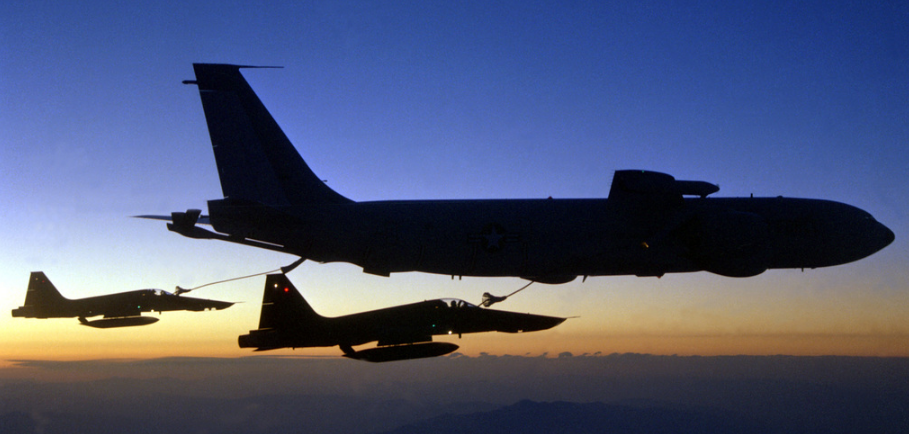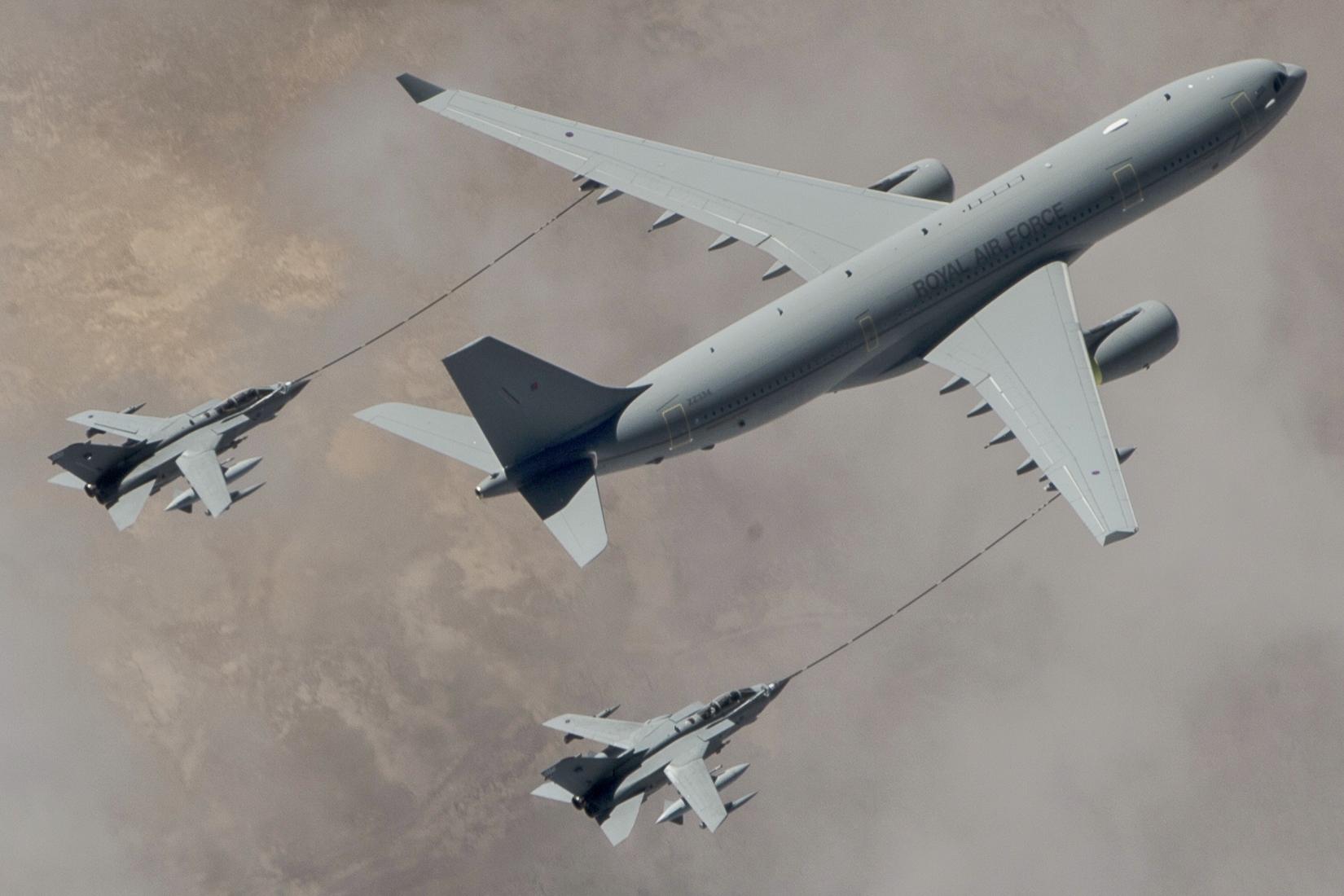The Kingdom of Saudi Arabia recently ordered four Airbus A330 Multi Role Tanker Transport aircraft. According to Airbus, the first of these four aircraft will begin undergoing conversion from the Airbus A330-200 platform the MRTT variant is derived from, transforming it into an aerial tanker and strategic transport platform in 2026. Once delivered to the Royal Saudi Air Force in 2027, the aircraft will operate alongside another six Airbus A330 MRTTs already in service while awaiting the arrival of the three remaining newly ordered aircraft.
A state-of-the-art platform, the A330 MRTT flexibly adapts to both scenario thanks to the human-operated fly-by-wire boom controlled by a third crew member in the aircraft cockpit and the two hoses and drogues. The boom is installed in a semi recessed position under the center fuselage tail from which it can deploy and extend are able to transfer 3 600 kilograms of fuel per minute (1 200 US gallon per minute). The two hoses trailing the aircraft wings can each transfer 1,300 kilograms of fuel per minute (420 US gallon per minute).
In operational use with the Royal Saudi Air Force, the MRTTs will perform a variety of aerial refueling missions in support, primarily, of a mixed force of combat aircraft comprising the Panavia Tornados, the Eurofighter Typhoons and F-15s of various configurations; F-15C/Ds, F-15Es and F-15-S/SAs. However, while the American-built combat aircraft like the F-15s rely on a boom-to-receptacle mechanism to allow fuel to be received from the aerial tanker, the Tornados and Eurofighters rely on the hose and drogue kit. Attached to a pod under each of the A330RTT wing, these kits provide a trailing hose where aircraft connect in order to be refueled.
Adding particularity to their A330 MRTTs configuration, Saudi Arabia has requested that each of their aircraft be fitted with a refuelling receptacle for in-flight fuel reception.
According to Airbus, the A330 MRTT programme has received 82 orders from 15 countries. With its widebody fuselage, the A330 can carry a payload of up to 45 tonnes allowing it to be configured to easily accommodate as in its commercial variant between 266 and 300 travelers. Fitted with a large cargo fuselage side door on its main deck, the aircraft can convert into a dedicated freighter. Using its three standard lower deck cargo compartments, the aircraft is dimensioned to absorb cargo containers and pallets, ranging from the LD1 to LD3 to LD6, as well as the standard 88×108 inch 463-L NATO military pallets. In a medical evacuation role, the MRTT main deck can carry up to 130 NATO-standard stretchers. In adsition, Airbus also proposes another medical-centric configuration providing 28 NATO stretchers, up to six critical care modules, 20 seats for medical staff and 100 passenger seats.
As a pure tanker the platform relies on its ability to carry 111 000 kgs (245 000 lbs) of fuel in its standard internal fuel tanks inherited from the A330-200 basic design. The internal fuel tanks consist of the main wings and wing box tanks aided by vent and trim tanks located on the outer wing and horizontal tail surfaces. Surpassing the older Boeing KC-135 designs which carried a maximum of 90 000 kgs (200 000 lbs) of fuel, the A330 MRTT also bests the competing Boeing KC-46 Pegasus 96 200 kgs (212 000 lbs). Airbus claim that the A330 MRTT uniquely has the operational capability to offloading 50,000 kg during a four-hour loitering mission at over 1,000 nm from its take-off point.

This latest deal has packaged logistical support including spare parts, training services and service support that will cover the four new aircraft while contributing as well significant transfer of technological competencies to local companies. This clause had been provisioned through a previously signed agreement involving the Kingdom’s General Authority for Military Industries (GAMI).
